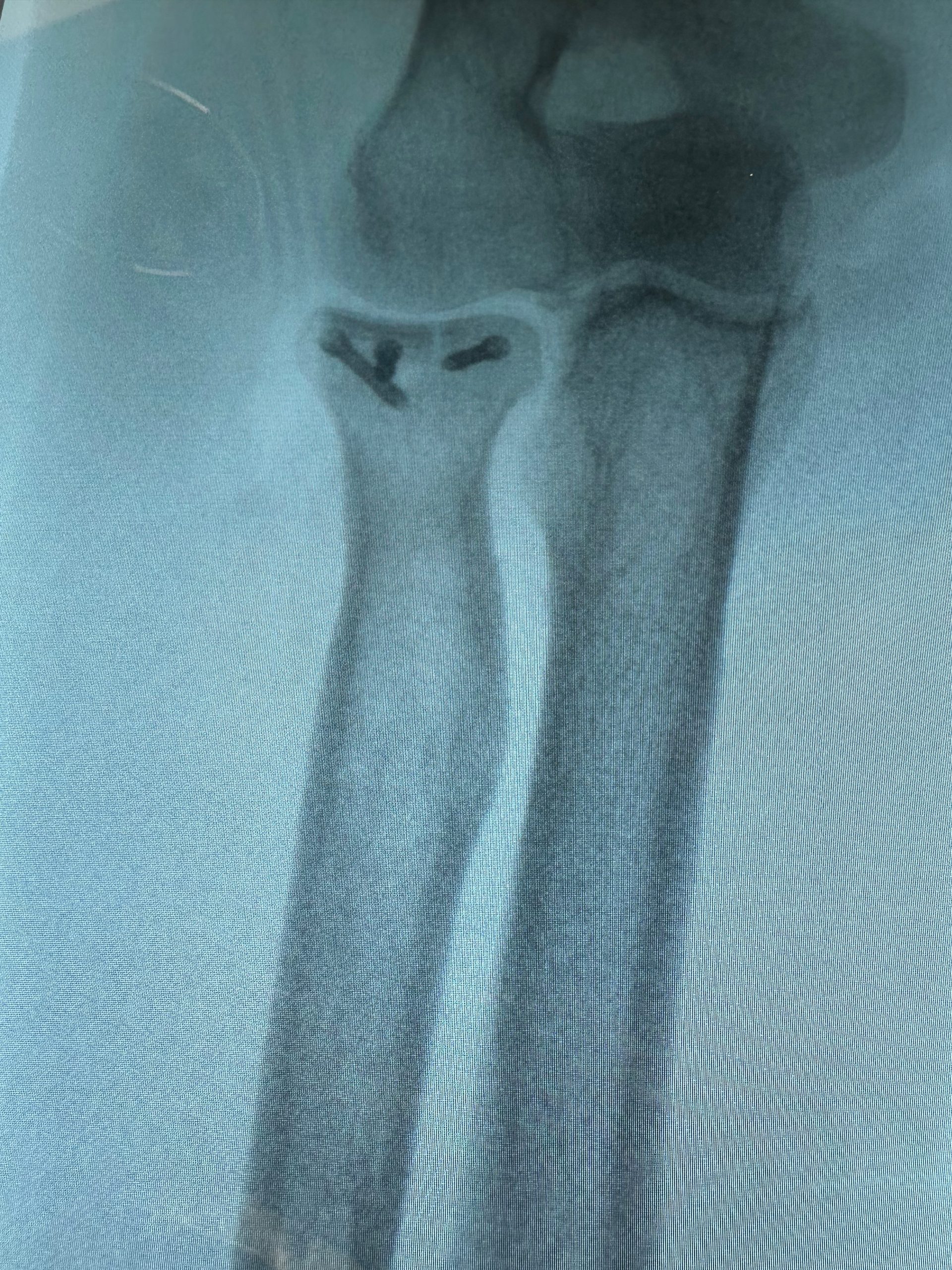Fractures Around the Elbow
Causes, Symptoms, Types, Treatment Options, and Rehabilitation
Causes and symptoms
Fractures around the elbow can occur due to various causes, including:
- Direct trauma from falls, sports injuries, or accidents.
- Twisting injuries during sports or physical activities.
- High-energy impacts.
Symptoms of fractures around the elbow may include:
- Pain: Intense pain at the site of the fracture, worsened by movement or pressure.
- Swelling and bruising: Swelling and bruising around the injured area due to soft tissue damage.
- Limited range of motion: Difficulty moving the elbow due to pain and instability caused by the fracture.
- Visible deformity: In cases of severe fractures, a visible deformity or misalignment may be present.

Types of fractures around the elbow

Several types of fractures can occur around the elbow
- Olecranon fractures: Fractures of the bony prominence at the back of the elbow.
- Monteggia type fractures: A combination of a fracture of the ulna (the forearm bone on the inner side) and dislocation of the radial head (the forearm bone on the outer side).
- Fracture dislocations: Fractures that are associated with dislocation of the elbow joint.
- Distal humerus fractures: Fractures at the lower end of the humerus bone.
- Radial head fractures: Fractures of the head of the radius bone (forearm bone on the outer side of the elbow).
- Coronal shear capitellum fractures: Fractures involving the capitellum - the part of the humerus that articulates with the radius.
Treatment options
The treatment approach depends on the type, location, and severity of the fracture.
Non-surgical treatment: Simple and stable fractures may be managed without surgery. Non-surgical treatment options may include:
- Plaster or sling: Immobilisation of the elbow with a plaster cast or sling to allow the fracture to heal.
Surgical treatment: Fractures that are unstable or involve joint surfaces often require surgical intervention. Surgical options may include:
- Plates and screws: Internal fixation with plates and screws to hold the fractured bone fragments together.
- Joint replacements: In severe cases involving significant joint damage, joint replacements may be considered.

Surgical treatment with screw fixation to radial head fracture.
Rehabilitation
Rehabilitation plays a crucial role in the recovery process for fractures around the elbow:
Self-directed exercises: For simple fractures, patients may perform gentle range-of-motion exercises to prevent stiffness and maintain elbow mobility.
Physiotherapist guidance: For more complex fractures or those requiring surgical intervention, rehabilitation may be performed under the guidance of a physiotherapist. This may involve a combination of exercises, regular reviews, and therapy sessions to restore elbow function and strength.

The elbow joint often becomes stiff after an injury, making rehabilitation essential to minimise post-injury stiffness. Regular exercises and guidance from a physiotherapist can help improve range of motion, strength, and function in the elbow after a fracture.
Elbow fracture care with
Dr Oscar Brumby-Rendell
As a specialist in upper limb orthopaedics at the Adelaide Shoulder & Upper Limb Clinic, Dr Oscar Brumby‑Rendell provides expert care for elbow-area fractures:
He delivers:
-
Precise diagnosis including advanced imaging strategies
-
Personalized treatment plans, whether conservative or surgical
-
Expert surgical techniques, including minimally invasive ORIF, tension band fixation, and customized joint reconstruction
-
Tailored rehabilitation protocols to restore function and strength, tailored to your lifestyle and expectations
Dr Brumby‑Rendell’s multidisciplinary clinic network in Adelaide ensures accessible, comprehensive care—minimizing recovery time and maximizing functional recovery.

Ready to learn more?
Here are some more elbow-related videos for you to look into lead by Dr James Mclean and Dr Oscar Brumby-Rendell.
Read more articles about elbow-related injuries below
Once you have a referral…
Book your consultation here.
